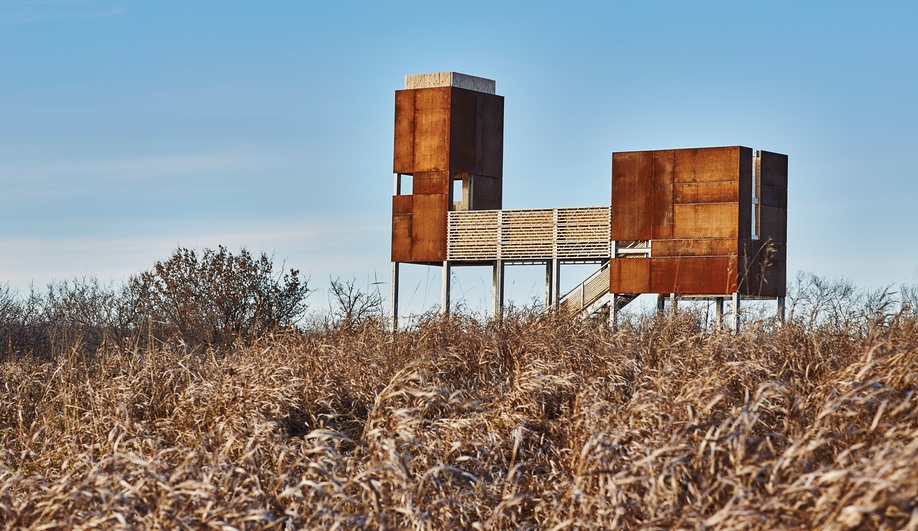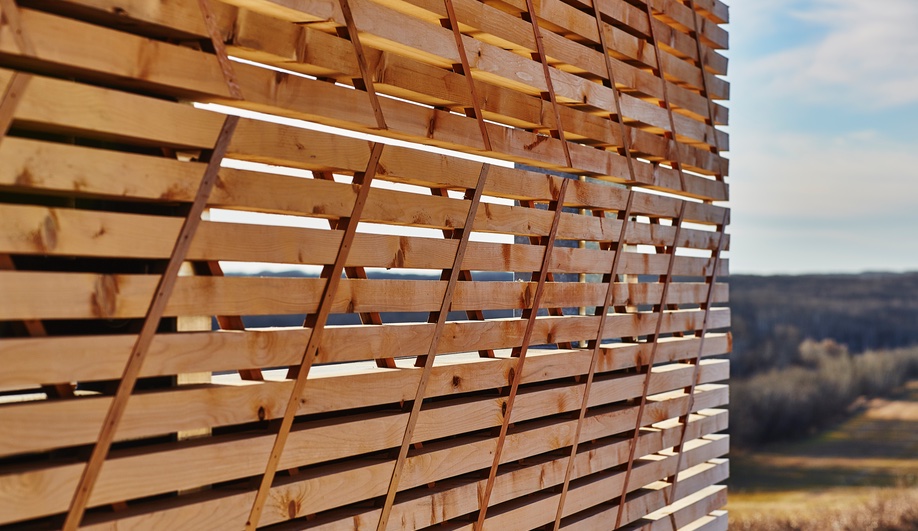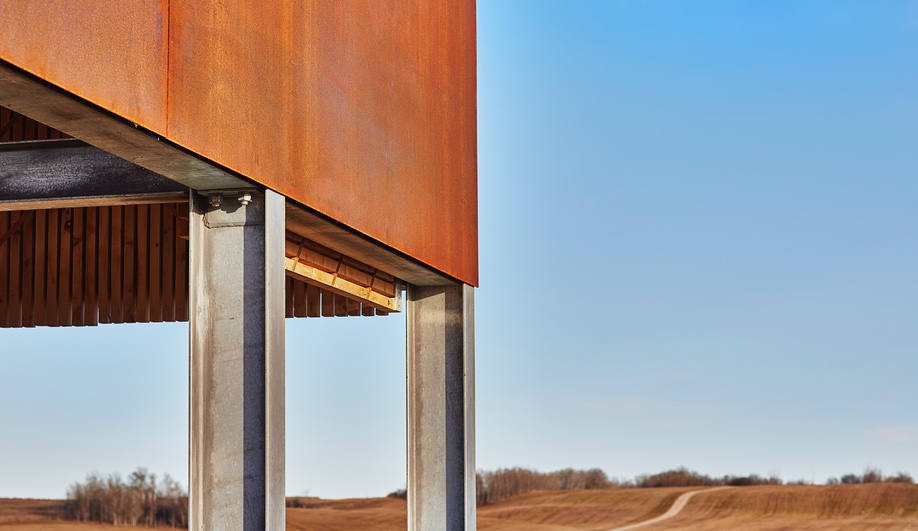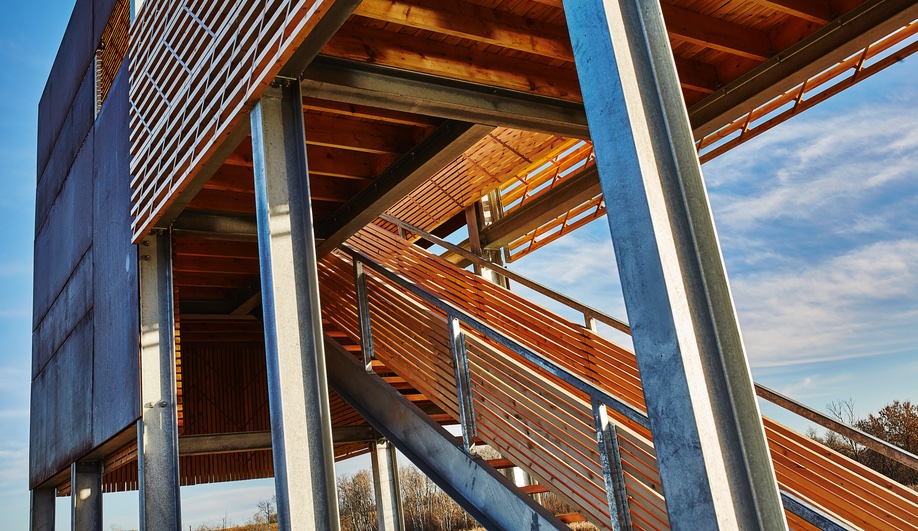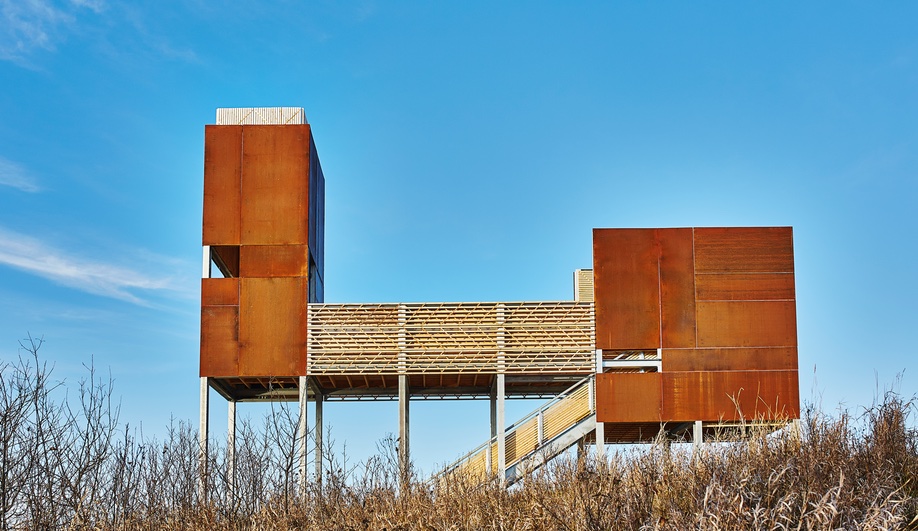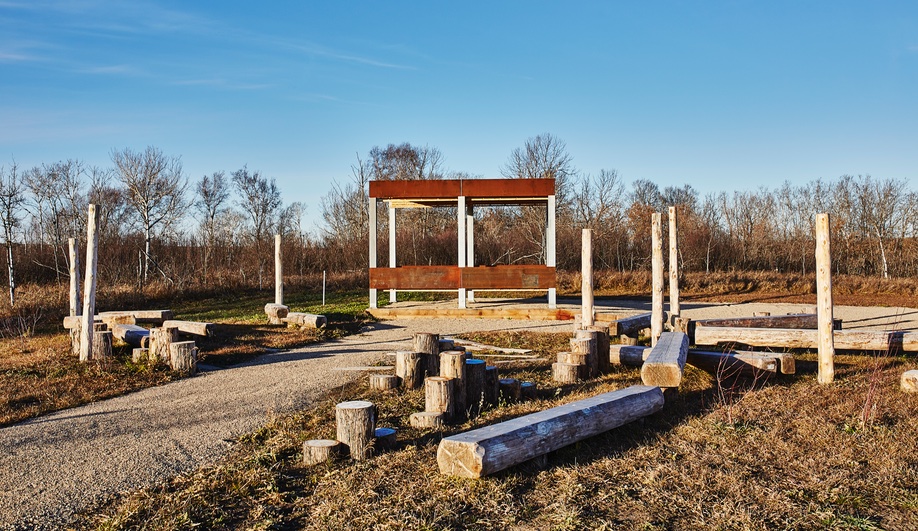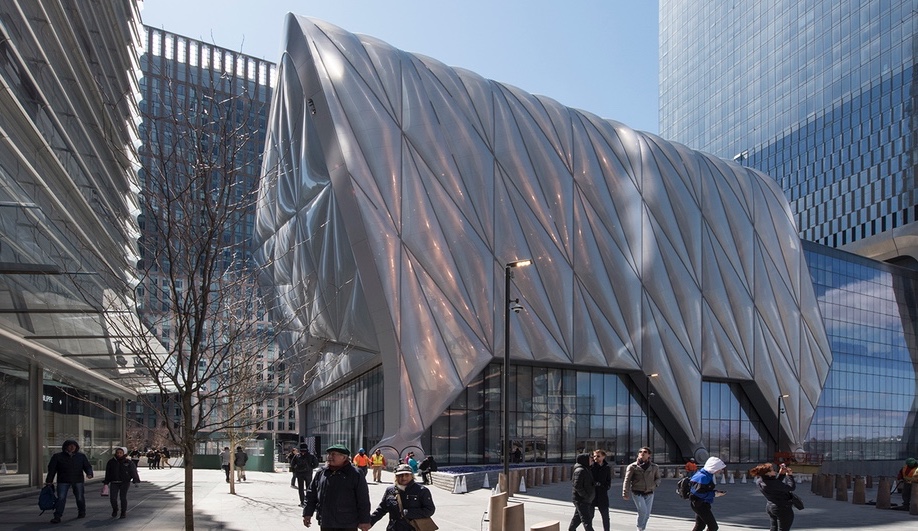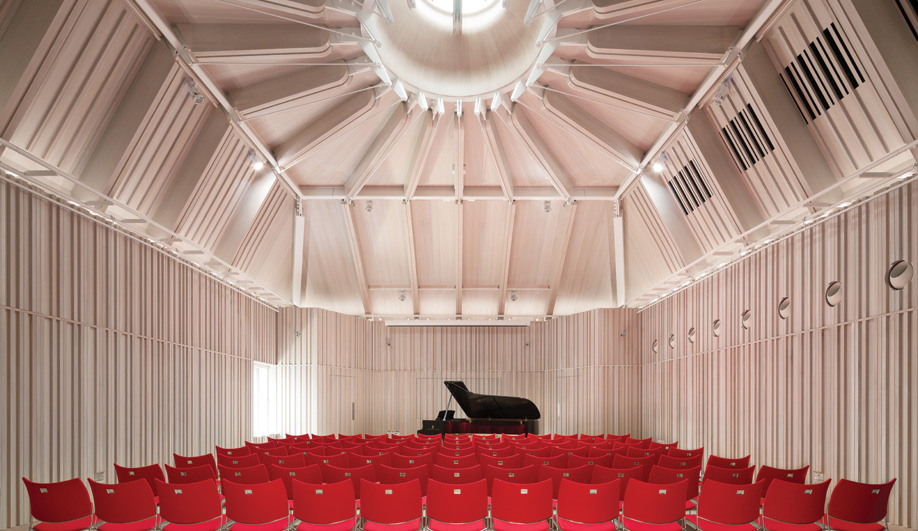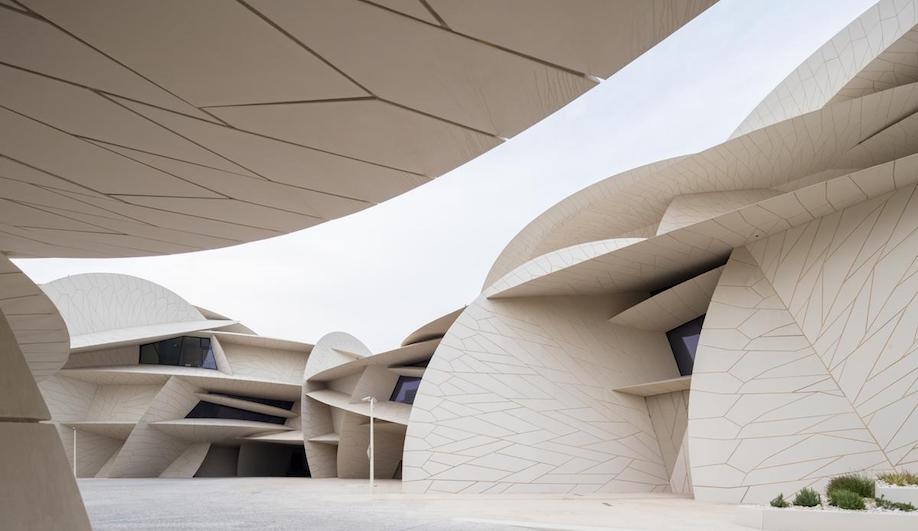Designated as a National Historic Site of Canada in 1923, the narrative of the village of Batoche along the banks of the South Saskatchewan River is a familiar one – appropriation of a thriving Métis settlement by the Canadian government. A new installation quietly contemplates that history.
Formed in 1872 at an intersection on the trade route that connected Winnipeg, Edmonton and the South Saskatchewan River, Batoche was home to a flourishing nomadic-turned-agrarian community, one that divided the landscape into linear river-lots that afforded every family river-side frontage. Throughout the 1880s, a number of policies implemented by the federal government threatened to dismantle the Métis way of life through the imposition of a grid-based system of land division. In response, the Métis formed an independent nation, the Provisional Government of Saskatchewan, in March 1885. In May, the dominion of Canada extinguished what they considered to be a rebellion.
A metaphoric bridge between pre- and post-battle, Living with the Land is a series of new interactive structures that compels a reflection on the cultural history of the Métis people, and on the important role that the linearly divided landscape played within that heritage. Conceived by Nova Scotia’s interdisciplinary design firm Form:Media and Ekistics Plan+Design, the installation is comprised of three expressions: a viewing lens, a platform and a family garden, the sequential arrangement of which places the land as main player.

Situated on Lot 47 – the original belt of land owned by Batoche founder Xavier Letendre – Living with the Land is first experienced through the viewing lens. A 2.4-by-2.4-by-3.3-metre open-ended volume, it frames a westward view towards the river, bringing into focus the Métis’ relationships with the land and water. The interior of the Corten-clad box is lined with horizontally situated eastern white cedar planks, their plane a correlation to the direction of the plot the box sits on.
From here, a 730-metre meditative walk leads to the platform, two chambers linked by a stage. Again, Corten covers the exterior, and cedar envelops the inside, creating a material connection between the two land-separated buildings. In each, the wood panelling is held together by western red cedar battens, set at a 45-degree angle. “While developing the panels, we discovered, that like a woven textile, these inset battens acted as structural support, minimizing the reliance on fasteners,” says Chris Crawford, lead architect of the project.
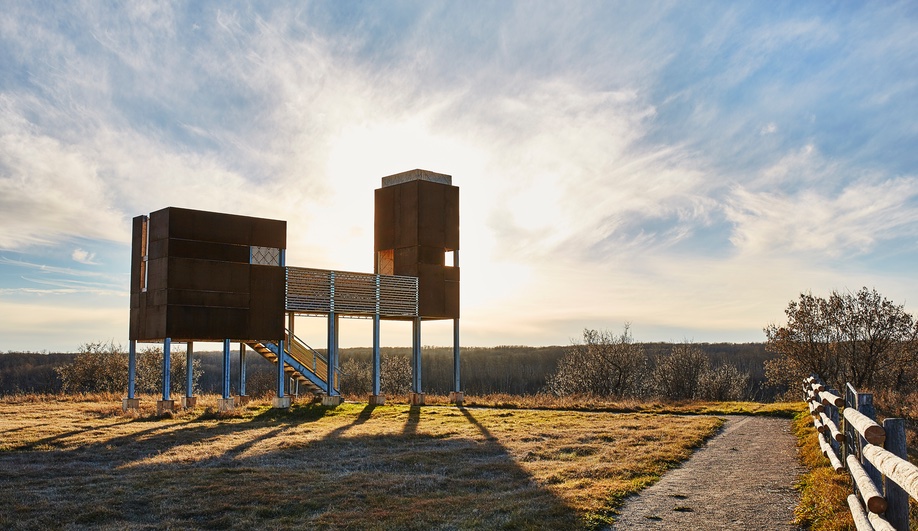
The resulting aesthetic references the traditional weave of the Métis Assomption sash. Accessed via a flight of stairs, the platform is in reality three structures: an enclosure that offers a look back on the viewing lens, an elevated open-air bridge, and a second chamber. Here, there are three perspectives for contemplation: to the river, representing the Métis’ relationships to the water and the earth; to the plains, home to many Métis today; and skyward, intended as a the promise of the people’s “infinite future.”
Emerging from the platform, the visitor engages once again with the land at the family gardens, a 100-metre walk away. An area for play and picnics, the garden features a Corten-and-cedar shelter and tree stumps that encourage play and exploration. “For many Canadians, the Métis history ends with the North-West Rebellion of 1885,” says John deWolf, who led the interpretive planning of the design. “Our goal was to portray a culture, once thriving in Batoche, now thriving across the land.”
“Our hope is that Métis visitors have a sense a pride that their story is now being represented, specifically that they are here today as a proud and important part of our country,” adds Crawford. “I hope that visitors from afar grasp a better understanding of what a rich and important culture the Métis offer, that through these large-scale architectural and landscape features they physically experience the life of this site, and that by reinforcing this story with the land that people leave with a deeper understanding of what life was and is like for the Métis people.”


